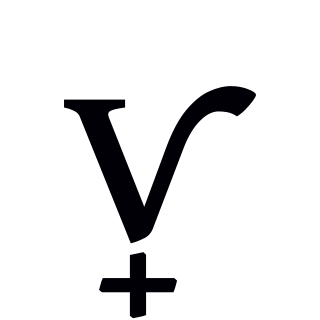
SIL Global is an evangelical Christian nonprofit organization whose main purpose is to study, develop and document languages, especially those that are lesser-known, in order to expand linguistic knowledge, promote literacy, translate the Christian Bible into local languages, and aid minority language development.

The bilabial clicks are a family of click consonants that sound like a smack of the lips. They are found as phonemes only in the small Tuu language family, in the ǂ’Amkoe language of Botswana, and in the extinct Damin ritual jargon of Australia. However, bilabial clicks are found paralinguistically for a kiss in various languages, including integrated into a greeting in the Hadza language of Tanzania, and as allophones of labial–velar stops in some West African languages, as of /mw/ in some of the languages neighboring Shona, such as Ndau and Tonga.

The voiced alveolar lateral flap is a type of consonantal sound, used in some spoken languages. The symbol in the International Phonetic Alphabet that represents this sound is ⟨ɺ⟩, a fusion of a rotated lowercase letter ⟨r⟩ with a letter ⟨l⟩. Approved in 1928, the symbol represented a sound intermediate between and or between and until 1979 when its value was redefined as an alveolar lateral flap.

The velar ejective is a type of consonantal sound, used in some spoken languages. The symbol in the International Phonetic Alphabet that represents this sound is ⟨kʼ⟩.

The voiced retroflex sibilant fricative is a type of consonantal sound, used in some spoken languages. The symbol in the International Phonetic Alphabet that represents this sound is ⟨ʐ⟩, and the equivalent X-SAMPA symbol is z`. Like all the retroflex consonants, the IPA symbol is formed by adding a rightward-pointing hook extending from the bottom of a z.
A front vowel is a class of vowel sounds used in some spoken languages, its defining characteristic being that the highest point of the tongue is positioned approximately as far forward as possible in the mouth without creating a constriction that would otherwise make it a consonant. Front vowels are sometimes also called bright vowels because they are perceived as sounding brighter than the back vowels.

The Teda language, also known as Tedaga, Todaga, Todga, or Tudaga is a Nilo-Saharan language spoken by the Teda, a northern subgroup of the Toubou people who inhabit southern Libya, northern Chad and eastern Niger. A small number also inhabit northeastern Nigeria.
The voiced labial–velar nasal is a type of consonantal sound, used in some spoken languages. The symbol in the International Phonetic Alphabet that represents this sound is ⟨ŋ͡m⟩.

The voiced retroflex lateral flap is a type of consonantal sound, used in some spoken languages. The 'implicit' symbol in the International Phonetic Alphabet is ⟨𝼈 ⟩. The sound may also be transcribed as a short ⟨ɭ̆ ⟩, or with the retired IPA dot diacritic, ⟨ɺ̣⟩.

The voiced bilabial flap is an uncommon non-rhotic flap. It is usually, and perhaps always, an allophone of the labiodental flap, though it is the preferred allophone in a minority of languages such as Banda and some of its neighbors.
Dadibi is a language of eastern Papua New Guinea. In 2001, the Bible was translated into Dadibi.
Myene is a cluster of closely related Bantu varieties spoken in Gabon by about 46,000 people. It is perhaps the most divergent of the Narrow Bantu languages, though Nurse & Philippson (2003) place it in with the Tsogo languages (B.30). The more distinctive varieties are Mpongwe (Pongoué), Galwa (Galloa), and Nkomi.
Amahuaca is an indigenous language of the Amazon Basin in Peru and Brazil. It is also known as Amawaka, Amaguaco, Ameuhaque, Ipitineri, and Sayaco. Amahuaca is a Panoan language that is believed to be closely related to Cashinahua and Yaminawa. There around 220 speakers in Brazil, and around 328 speakers in Peru.
Xipaya is an endangered language spoken in the Pará region of Brazil. It is one of the approximately 70 Tupian languages of South America. At last count, Xipaya was only spoken by two elderly women in Altamira, Pará.

The 14th Dalai Lama is the incumbent Dalai Lama, the highest spiritual leader and head of Tibetan Buddhism. Before 1959, he served as both the resident spiritual and temporal leader of Tibet, and subsequently established and led the Tibetan government in exile represented by the Central Tibetan Administration in Dharamsala, India. The adherents of Tibetan Buddhism consider the Dalai Lama a living Bodhisattva, specifically an emanation of Avalokiteśvara or Chenrezig, the Bodhisattva of Compassion, a belief central to the Tibetan Buddhist tradition and the institution of the Dalai Lama. The Dalai Lama, whose name means Ocean of Wisdom, is known to Tibetans as Gyalwa Rinpoche, The Precious Jewel-like Buddha-Master, Kundun, The Presence, and Yizhin Norbu, The Wish-Fulfilling Gem. His devotees, as well as much of the Western world, often call him His Holiness the Dalai Lama, the style employed on his website. He is also the leader and a monk of the Gelug school, the newest school of Tibetan Buddhism, formally headed by the Ganden Tripa.

A voiceless palatal implosive is a rare consonantal sound, used in some spoken languages. The symbol in the International Phonetic Alphabet that represents this sound is ⟨ ʄ̊ ⟩ or ⟨cʼ↓⟩. A dedicated IPA letter, ⟨ƈ⟩, was withdrawn in 1993.
Nisu is a language cluster spoken by half a million Yi people of China. It is one of six Yi languages recognized by the government of China. The Yi script was traditionally used, though few can still read it. According to Lama (2012), Nisu (Nishu) autonyms include, , and.
The Rigwe language, Nkarigwe, is a Plateau language of Nigeria spoken by the Irigwe people mainly found in Bassa Local Government Area of Plateau State.
The voiced bilabial affricate is a rare affricate consonant that is initiated as a bilabial stop and released as a voiced bilabial fricative. It has not been reported to occur phonemically in any language.

PHOIBLE is a linguistic database accessible through its website and compiling phonological inventories from primary documents and tertiary databases into a single, easily searchable sample. The 2019 version 2.0 includes 3,020 inventories containing 3,183 segment types found in 2,186 distinct languages. It is edited by Steven Moran, Assistant Professor from the Institute of Biology at the University of Neuchâtel and Daniel McCloy, Researcher at the Institute for Learning and Brain Sciences at the University of Washington.










